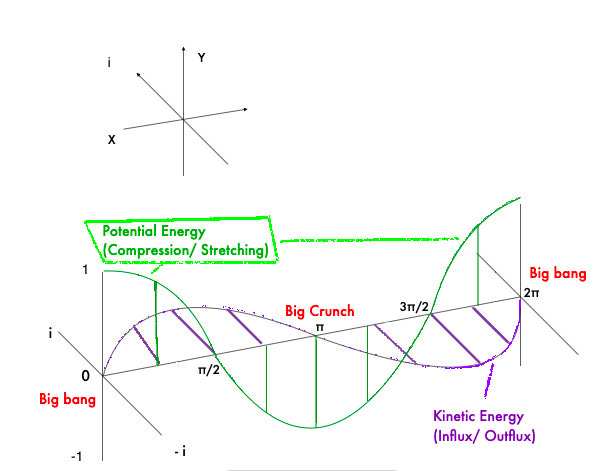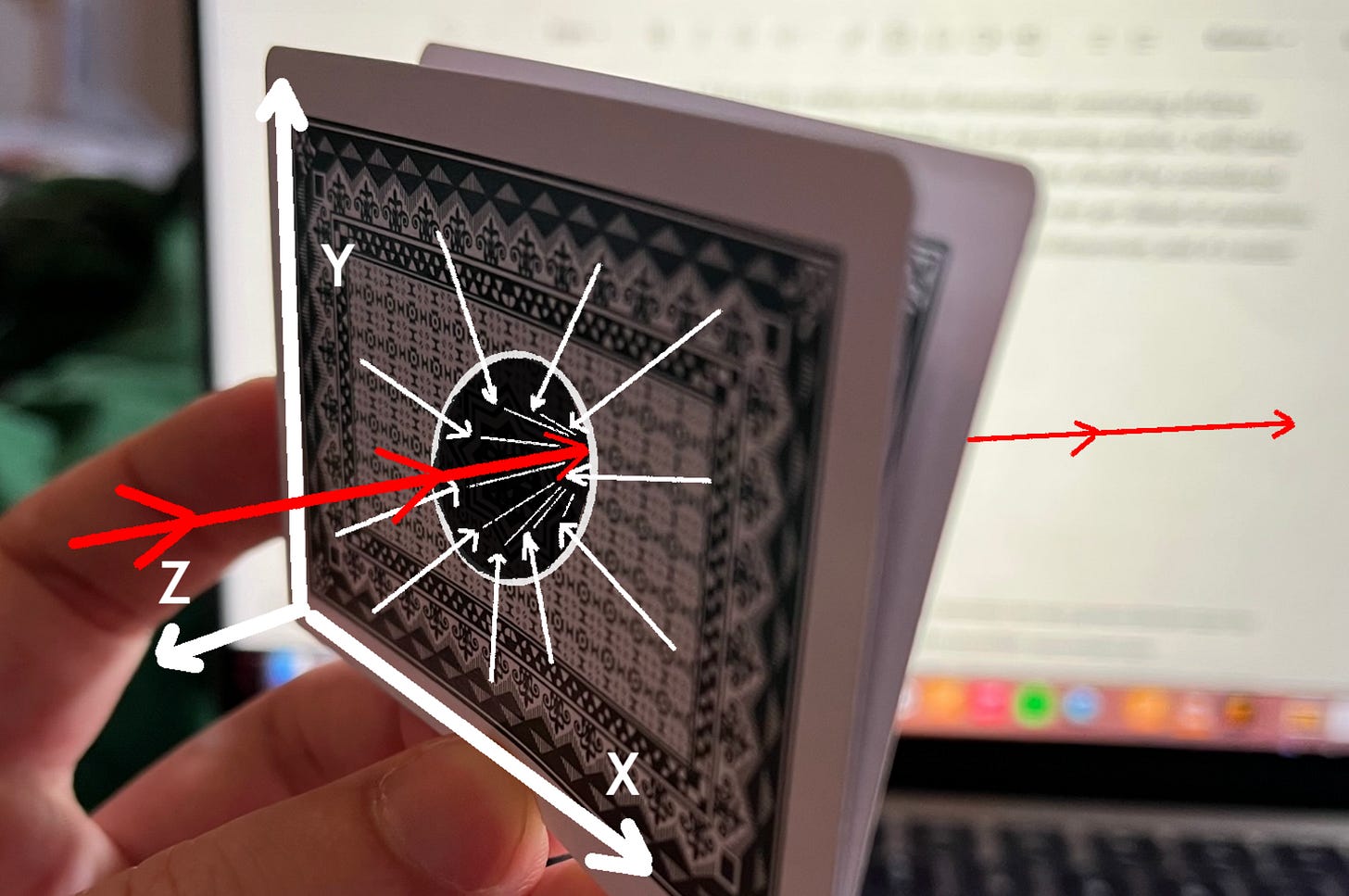Towards a new theory of gravity, mass, matter and space
It’s time for us to create a more unified physical mechanics, one in which matter is not arbitrarily separated from space and gravity, but part and parcel of it
In his formulation of General Relativity, Einstein wrote:
We make a distinction hereafter between “gravitational field” and “matter” in this way, that we denote everything but the gravitational field as “matter.” Our use of the word therefore includes not only matter in the ordinary sense, but the electromagnetic field as well.
The definition of matter as everything that isn’t the gravitational field is a logical quandary, raising the same questions Aristotle and other classical philosophers raised in regards to atoms and vacuum. If matter has a finite size, can the gravitational field and matter overlap and exist in the same location simultaneously? And what is the gravitational field then, if its only claim to existence is that it dictates the motion of matter? The apparent uselessness of absolute space prompted Newton’s contemporary, Gottfried Leibniz, to joke that Newton regarded space as “an organ which God makes use of to perceive things by.” If Leibniz had been alive to see the advent of General Relativity, he may have made a similar remark: that space, in Einstein’s vision, is merely an organ which God makes use of to move things by.
But we know this is not the whole story. We know that space has dynamic properties, that it exists in some way, shape, or form. We have proven the existence of gravitational waves, which imply a medium upon which the wave is propagating, not just an empty expanse. Not only do we speak of space’s curvature and geometry, but we speak of its motion. NASA regards Earth’s gravitational field as a space-time vortex, suggesting not just curvature but movement and pressure.
It has been clear for a century that space is a dynamic medium capable of transmitting energy and moving matter, and in the intervening time it has become equally clear that what we think of as matter is not as solid as we once thought. Quantum physics has shown us that on a fundamental level, atoms and their constituent particles exhibit wave behavior. They are not, as we once thought, little indivisible billiard balls hurtling through a vacuum. If space is an energetic medium and particles are really waves, then the logical division between vacuum and substance (a dichotomy dating back to the classical atomists in ancient Greece) has been blurred considerably, if not completely destroyed.
In the current paradigm, it is understood that mass “tells space-time how to curve” or that matter is “everything but the gravitational field,” but if space is a dynamic medium, particles are waves, and all mass implies a space-time curvature, is it really much of a leap to say that mass is space-time curvature or movement, rather than just causing it? If particles are waves, then they must be waves of / in something, and that something is space itself.
What are the consequences of such a leap?
Envisioning mass as space-time distortion or flux gives us a mechanism to define distinct types of mass and energy, negative and positive. The mathematics of General Relativity allow for negative mass, even as doctrine tells us that the energy density of a region of space-time cannot be negative. Energy conditions are not physical constraints per se, but are rather mathematically imposed boundary conditions that attempt to capture a belief that "energy should be positive." This belief, however, is a misguided one. I explained in my article on Euler’s formula and oscillating systems that we can imagine energy as being negative or positive, or “real or imaginary,” in the same way that we imagine it as potential or kinetic. As long as the absolute magnitude is consistent, positivity and negativity can be variable and interchangeable without breaking the law of energy conservation.
This is important for imagining the ways in which space-time can be distorted. Like a spring, if space-time can be compressed, then it can also be stretched. If gravity can be imagined as a “sink-like”curvature in the space-time metric, there must also exist “hill-like” curvature which repels. The inflation of the universe, generally attributed to dark matter or dark energy, is direct evidence that space not only mediates the attraction between objects but their repulsion. Mass, in our current conception, only allows us to explain the attraction. The repulsion is explained by the “cosmological constant,” a variable with no metaphysical basis which Einstein inserted into his equations as a “fudge-factor,” an extra push to prevent the system from collapsing in on itself. If mass is really a form of space-time distortion or flux, then both attraction and repulsion can be neatly explained as opposites sides of the same coin— compression or stretching, influx or outflux, and we may arrive at a metaphysical basis for the cosmological constant without recourse to exotic new forms of matter.
If we return to the Euler Formula conception of universal oscillation, we find that this new conception of space as a medium fits in nicely. At the moment of the Big Bang, space is infinitely compressed, and so, like a spring, it seeks to explode from its pent up outward pressure. The outward pressure causes accelerating expansion until an equilibrium point (pi/2 in the graph above), at which we could imagine space being neither compressed nor stretched. Momentum carries it past the equilibrium point and the fabric of space begins to stretch, until finally the momentum is exhausted, a point of infinite stretching is reached (pi in the graph above), and space begins to snap back toward its center. In this model, the compression or stretching of space is a representation of its potential energy or tension.
This explanation is appealing, but it’s missing something. Why does the outward pressure of this supposed compression outweigh the inward pressure we associate with gravity? If the strength of gravitational attraction increases with greater mass and with the proximity of massive objects, shouldn’t the Big Bang, when all the universe’s “matter” is infinitely close together, be the moment of greatest gravitational attraction? And shouldn’t the moment in which all matter is scattered infinitely far away be the moment of least gravitational attraction? The metaphor of compression and stretching runs contrary, even opposite, to our understanding of how gravity should work. Gravity should be strengthened by compression, not working against it, right?
We are only looking at one side of the coin— the potential energy. We need to complement the stretching and compression metaphor with another metaphor, inward and outward flux, kinetic energy.
It has become common-place to imagine the fabric of space being drawn into a center of gravity. The notion of a planet or star causing a “space-time vortex” is well-accepted. Inherent in the concept of a vortex and in almost every 3D visualization of gravity is a kinetic movement of space itself, a current drawn toward the center of gravity, carrying objects with it. Some would call this a mixed metaphor. They would say there is no movement of space per se, just curvature, and the curvature tells real matter how to move. But for the sake of argument, and for the reasons outlined earlier (the blurring of our once-rigid notions of space and matter), let’s assume that space really is moving— the strength of the gravitational field is really the strength of a current in space-time, the flux.
This conceptualization is appealing, but it provides no explanation of what happens to the space which is “sucked in.” If gravity is really a mechanical effect of space being pulled into the center of mass, why is it not accumulating there? Why do mass and the strength of the gravitational field remain consistent even as space is constantly rushing in?
(For this next part, it may be beneficial to read my previous article on the double-slit experiment and 4d space)
Let’s imagine reality as a two-dimensional plane. In the center of it, we have a planet with a strong gravitational field. According to GR, this planet cannot have gravity, because we need to introduce another dimension in order to produce the curvature which produces gravity, but for the sake of argument, let’s say our two-dimensional planet has gravity, and that the space around it is moving toward the center of mass like a whirlpool, or like water flowing into the drain of a sink. In either case, the metaphor implies a third, vertical dimension and an outflow of that water into that third dimension, not just a magical vanishing as it reaches the center. Whether we use GR or the “flux” idea, a higher dimension is necessary.
If we entertain the possibility that gravity is an influx of space, that this influx necessitates a complementary outflux, and that this outflux is hidden from us because it is occurring in a manner “perpendicular” to us in a 4th dimension, then we arrive at a possible explanation for how spatial “pressure” could outweigh gravitational attraction at the moment of the Big Bang. Quite simply, there is nowhere for the outflux to go. With all space-time compressed to a point, with all “parallel universes” made identical and superimposed upon a single location, there can be no discernible influx or outflux— an thus no gravity— but any influx of gravity in the moments immediately after the Big Bang must result in an outflux which pushes against neighboring matter. This is a battle which gravity will inevitably lose, because we have already reached the limit of contraction. Even if we ignore the positive Potential energy implied by the “compression” metaphor, the inward and outward kinetic energies are equal, and there is only one direction left for matter to go: outward.
This influx / outflux model also explains how gravitational attraction could outweigh spatial pressure at the opposite end of the spectrum, at the beginning of the “Big Crunch.” With space at its limit of expansion in four dimensions, the gravitational influx is once again minimal, essentially zero, but so is the outflux. Any outflux produced into neighboring parallel universes would have a negligible effect on their matter because there is no neighboring matter. In the reverse of the Big Bang, all parallel universes are once again identical and superimposed, but this time because of an infinitely low density, such that any added pressure is like a tear drop falling into an ocean. With the limit of expansion already reached, this time it’s a battle that gravity will inevitably win. Even if we ignore the negative Potential energy implied by the “stretching” metaphor, inward and outward kinetic energies are equal, and there’s only one direction left for matter to go: inward.
Ultimately, our traditional models of gravity fail for two reasons: they inadvertently treat 4D space as 3D because we have no way to easily conceptualize four dimensions, and they fail to coherently incorporate the motion or momentum of space itself. The compression and stretching metaphor is not perfect, because it only describes space’s potential energy while ignoring its motion. The influx and outflux metaphor is not perfect either, because it only describes space’s kinetic energy while ignoring its tension. Put together, they offer a fairly complete, though simplified, description of the mechanics of space.
So where does this leave our conceptions of mass and matter? It may be useful to imagine mass as a measure of the flux, the rate at which space is drawn into matter, matter itself being a four-dimensional vortex in the fabric of space-time. This is perhaps the most literal and accurate way of expressing it, but it still remains difficult to visualize or understand, since we need a dichotomy in order to conceive of anything. What does it mean for space to move through itself? What’s moving in relation to what? It sounds like a paradox.
Ultimately, we can conceive of the universe being a complex interaction between two or more mediums, but to say that it is a complex evolution of a singular substance is like the sound of one hand clapping, it makes no sense. In a quest for unification and simplicity, two interacting mediums is the logical limit.
In an upcoming article, I will discuss fractals and reiterating equations, and I will explain how they may give us a new explanation for how space can seem to be both homogeneous and infinitely complex at the same time.





